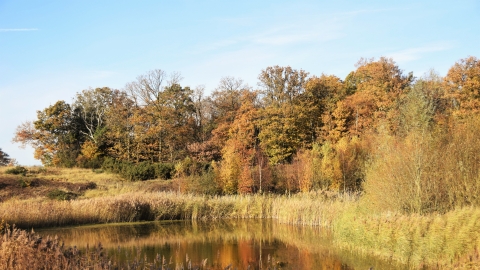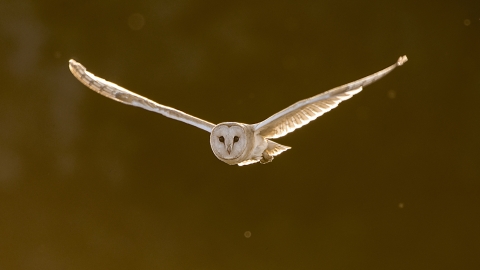

Photo - Peter Hewitt
Cockaynes Wood Nature Reserve
Location
Know before you go
Dogs
Under effective control
When to visit
Opening times
Accessible at all timesBest time to visit
All year roundAbout the reserve
Walking through the reserve, passing through two areas of mature woodland and a recently restored gravel pit, and along the Sixpenny Brook through the wet Villa Wood on the western edge. Filled with native trees including Chestnut, Hazel, Oak, Willow, Sallow, Alder, Hawthorn and Ash. In spring, the woodland floor is carpeted in wild flowers such as Bluebells, Wood Anemone, Moschatel and Primroses, while in the winter Scarlet Elf Cup fungus line the footpath besides the brook. In the autumn, the woods are transformed into a golden and russet toned landscape, which you can enjoy while having a spot of lunch on one of the benches spread around the reserve.
Cockaynes Wood to the north is an area of ancient woodland, mainly Chestnut, Oak and Hazel with dense patches of holly. This too is blanketed in Bluebells and Wood Anemone in spring, which are later succeeded by Wood Corydalis. In winter, keep an eye out for tiny Goldcrests flitting around in the holly, along with the usual tits and jays.
Moving into the centre and southern parts of the reserve, you will come across the old yard where the gravel was processed, an area of rich heathland surrounding two ponds and several old silt ponds which have now been colonised by Willows and Birch. Heather and Common Cow Wheat spread down the slopes from Cockaynes Wood, creating the perfect home for many invertebrates. In the summer months, large numbers of dragonflies frequent the ponds and heathland, where there is a chance of spotting grass snakes and lizards. In the summer in the rough woodland on the southern fringe, Glow Worms light up the foliage with their soft green glow. In the sandbanks, two species of rare solitary mining bees have been found.
Over a hundred species of wild flowers and twenty-three species of butterfly have been recorded on the site, including White Admirals and Green Hairstreaks. In the spring, listen out for the serenading of Nightingale and the ‘peewit’ calls of Lapwing frequenting the ponds. The woods are also home to a large population of Green and Greater Spotted Woodpecker and look skywards to spot birds of prey soaring overhead. Turtle dove are occasionally spotted in the open habitat, as are Linnet and Willow Warbler.
Species
Contact us
Environmental designation
Photo - Neil Higginson
Did you know?
One hundred species of bird have been spotted at this site, forty-three of which have nested here!
